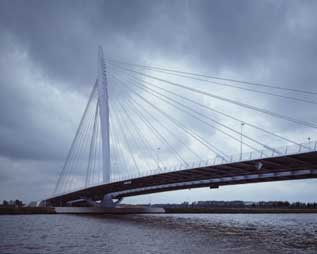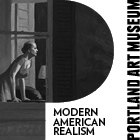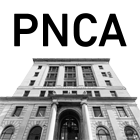
|
||
|
Portland art blog + news + exhibition reviews + galleries + contemporary northwest art
|
||
Thinking Big and Building Better Bridges I'm curious about how people in the art community will react to the front page
story in the Oregonian about
some creatives being edged out? Clearly gentrification is a double edged
sword, combining higher rents with an opportunity for better arts patronage. The devil is in the details on this issue.
I'd call it a cultural distillation process and the city's character is at stake, the weird part of Portland needs to get distilled and weirder as well. The real corner to turn here is patronage and that means the word sophistication needs to come into play amongst developers, politicians, RACC, collectors and the press (especially the O). Art for populism's sake (which panders to an assumed audience rather than challenging it) isn't enough, it takes challenging art programming, which is frankly a lot weirder than work that merely gestures at populism while hoping it will somehow to help creatives. Sophisticated artists aren't just a little different, they are extremely idiosyncratic. Portland is blessed with a lot of very serious artists and the city government has made a lot of noise about this. Still, little has been done. In fact the Everett Station Lofts (circa 1989) are still the best hotbed for emerging visual arts culture in town. Here's a prediction, whoever wins the next mayoral election will do so because they actually have a truly sophisticated arts plan that goes beyond minor gestures.  Prince Claus bridge by UN Studio Also, the I-5 bridge is too important to nickle and dime or second guess like this story in the Tribune. We need a design competition (Calatrava, Foster, UN Studio etc.) federal funds and an attitude that this will shape the region for the next 70 years. Why not plan on spening 8 billion plus and do it right. This requires big thinking not hunting for a bargain, it will cost us sorely in the long run if we don't. Posted by Jeff Jahn on March 16, 2007 at 16:11 | Comments (2) Comments Posted by: TJ Norris The need for increased patronage just the tip of the iceberg of issues we are faced with in the rapidly maturing Portland Art Market. Of course there are issues surrounding rising land values and the squeeze that puts on artists and emerging creative enterprises regardless of whether they are commercial or non-profit. We have the chorus of voices from the institutional non-profits for the need for more corporate donations. Then we have the galleries crying the blues about the pathetically small local collector base. When considering the issues separately, itís easy to miss the bigger picture. This has grown way beyond a robust, high quality art scene and evolved into one of the major industries in the state. I know other people think about this idea, but I donít see or hear any prominent figures in the Arts or Business communities framing the subject in these terms. The PAM Board of Trustees thinks about the art scene as an industry, if they didnít, the Jubitz Contemporary Art Center would have never happened. Sam Adams thinks about it, heís working toward building a comprehensive plan for the arts; unfortunately itís still more of an idea than a real project driven by leaders of the arts and business communities. The bigger galleries in town think about it, why else would they sink thousands of dollars into ads in the national arts magazines? Developers think about it. Jim Winkler would not have invested all that money into the newly named DeSoto building unless he was convinced that a high end retail arts mall made good business sense. All this activity and no major feature articles about the bigger mural this paints. I admit that I am an outsider compared to the people and institutions I mention, but I suggest that the Portland art scene is one of the major economic drivers for the local and regional economy. I donít have the numbers to back up this claim because I donít believe there are any studies or surveys that have ever been done from this perspective. All my efforts to find information on the gross product of the regional visual arts scene have lead to dead ends. It seems the people who might have the commercial numbers donít want to release that information. The problem is that the arts industryís void of corporate entities, the irony here being that non-profits often are underwritten by corporations. The arts scene is an industry made up of small businesses, individuals, and a myriad of non-profits. Outside of the non-profits these groups are difficult to quantify in terms on income generation. There are turf battles, politics and business rivalries and no structure to bring all the various elements together. We can see a creative community that generates a huge amount of economic activity, but there is no mechanism for measuring the actual size of the impact on the regional economy. How can a case be made for increased patronage of the arts by business and government without a regionally organized support structure and a reliable survey mechanism? Without these elements the only arguments available are anecdotal. If support could be generated for building an organizational body and tracking capabilities there is the potential for something very special. We have an opportunity to grow of our cultural economy into a cohesive whole which is much greater that the simple sum of its parts. This is where we are now, an arts scene made up of many special interest groups that look to entities like City Hall, RACC, the Portland Business Alliance, and POVB for co-operation while continuing to just pursue their own agendas. So, if there is truly the need and desire for greater levels of patronage from business and government, make the case for why supporting the highest possible level and volume of quality art makes good business sense. If you can get high profile media coverage outside of the visual arts pages (like in the business section) of the needs and benefits or this kind of support, I believe a larger portion of the local population will find reasons for interest. I emphatically do not want to see any unnecessary pandering to populism or lowering of the quality of the work shown here in Portland. The fact is the national interest in our local art market is fueled by our obsessive focus on the work instead of the hype. That is part of the reason such a high percentage of art sold in Portland is purchased by people from outside the region. The cultural amenities we have here are a huge tourist draw and we need to be aware of the economic benefits. The creation of great art is not about business, but the promotion and support of that type of creativity is all about business. Supporting artists and their creativity simply makes good business sense. Make the case for this and the patronage will come. Duane Snider
Posted by: Duane Post a comment Thanks for signing in, . Now you can comment. (sign out)
(If you haven't left a comment here before, you may need to be approved by
the site owner before your comment will appear. Until then, it won't appear
on the entry. Thanks for waiting.)
|
| s p o n s o r s |
 |
 |
 |
 |
 |
 |
 |
 |
 |
 |
 |
 |
 |
 |
 |
 |

|
Site Design: Jennifer Armbrust | • | Site Development: Philippe Blanc & Katherine Bovee | |


![[TypeKey Profile Page]](http://www.portlandart.net/nav-commenters.gif)